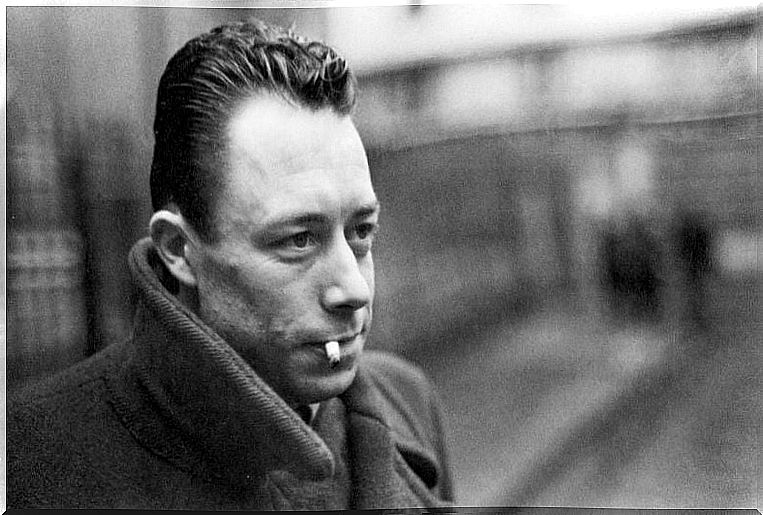Albert Camus And His Book “La Peste “

The book The Plague was written by Albert Camus, a Franco-Algerian journalist, playwright, novelist, philosophical essayist and Nobel laureate. He is often described as an existentialist writer, although he himself rejected this label. He began his literary career as a political journalist, actor, director and playwright in his native Algeria.
Later, while living in occupied France during World War II, he became active in the Resistance, being from 1944 to 1947 chief editor of the Combat newspaper.
By the middle of the century, by the force of his three novels ( The Stranger , The Plague and The Fall ) and two long-term philosophical essays ( The Myth of Sisyphus and The Rebel ) he had already obtained great recognition.
It was in these works that he introduced and developed philosophical ideas such as the concept of the absurd and the notion of revolt, which made him famous. Camus considered the absurd to be a fundamental and even defining characteristic of the modern human condition.
In awarding Camus his prize for literature in 1957, the Nobel Prize committee cited his persistent efforts to “illuminate the problem of human consciousness in our time.”

Albert Camus: a literary icon
Camus was at the height of his career, working on an autobiographical novel and planning new projects for theater, film, and television when, on January 4, 1960, he tragically died in a car accident. He was a passenger in a vehicle driven by his friend and editor Michel Gallimard, who also suffered fatal injuries.
The author was buried in the local cemetery in Lourmarin, a town in Provence where he, his wife and daughters had lived for almost a decade.
In the late 1940s, his growing reputation as a writer and thinker was broadened with the publication of The Plague, an allegorical novel and a fictional parable of the Nazi occupation and the duty of revolt.
Plague
The Plague is set in the coastal city of Oran and is Camus’s second novel. It is the story of an outbreak of the plague, traced from its inadvertent beginnings, and its irresistible dominance to its climax and decline; all told from the point of view of one of the survivors.
At the end of the novel, the plague finally retreats. The plague can be interpreted as an allegory in which humanity must be preserved from the fatal pestilence of mass culture, which turns previously free, autonomous and independent human beings into a new soulless species.
At various points in the novel, Camus’ narrator describes the plague as if he were a bored, but very capable civil servant or bureaucrat:
This identification of the plague with the oppressive civil bureaucracy and the obstacles to talent is used once again as a symbol of totalitarianism. This time, however, he is almost cartoonishly personified as a domineering type of government official or office manager from hell.
The plague: argument
Oran is “dirty”. No birds, trees or gardens. In it the only thing that changes in the seasons is the sky. The rest remains unchanged, in a physically and mentally arid landscape that awakens violently when the epidemic described by Camus breaks out, with echoes of the plague that ravaged the city in 1849.
However, the novel is more about characters than landscapes. The main character, Dr. Bernard Rieux, bumps into a dead rat on the stairs of the building where he lives. It is the first indication, shared the next day with patients and friends, of the plague of rats followed by the plague epidemic.
The doorman of the Rieux building is the first victim and dies a few days later. The doctor gets a health commission from the prefecture. They try different remedies, which lengthen life but do not cure the disease. Although by giving himself to the sick, he finds meaning in his life, he wonders if all he is achieving is prolonging the pain.
The authorities put the city in quarantine. No one can enter or leave. As the moral hero of the novel, the doctor exposes himself to contagion to help others. The behavior of the people varies from the purest selfishness to the surrender without limit.
One of the main characters, Tarrou, the latest victim of the epidemic, refers to the human condition in this way: “Even those who do not have it seem to carry that sickness in their hearts.” Finally, the plague subsides, the gates of the city are opened and parties are organized to celebrate it.

Meaning of the Plague
Of all of Camus’s novels, none depicted man’s confrontation and coexistence with death so vividly and on such an epic scale. Most of us read The Plague when we were teenagers and we should all read it again.
Not only are all of humanity’s responses to death represented in it, the play works both literally and metaphorically.
Today, La Peste can tell the story of a different kind of plague: that of a destructive, hypermaterialist turbo- capitalism, and it can do it as well as any contemporary work.
Our society has many points that could be labeled as absurd; the good thing is that Camus’s novel analyzes our relationship with the absurdity of modern existence. It can very well describe the plague in a society that follows empty promises and even destroys the constant against which Camus measured human mortality: nature.









